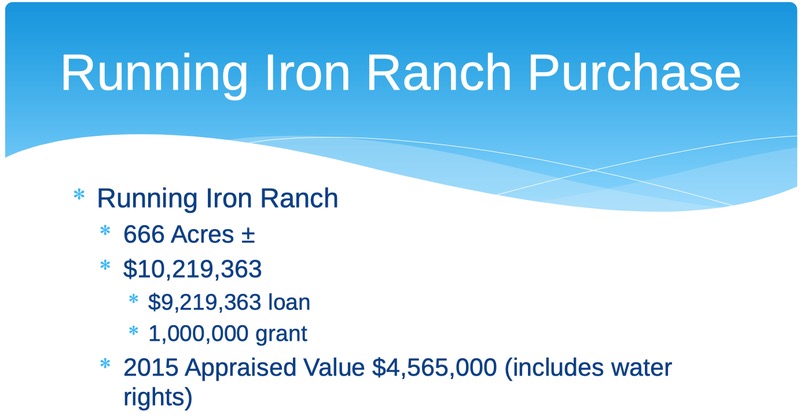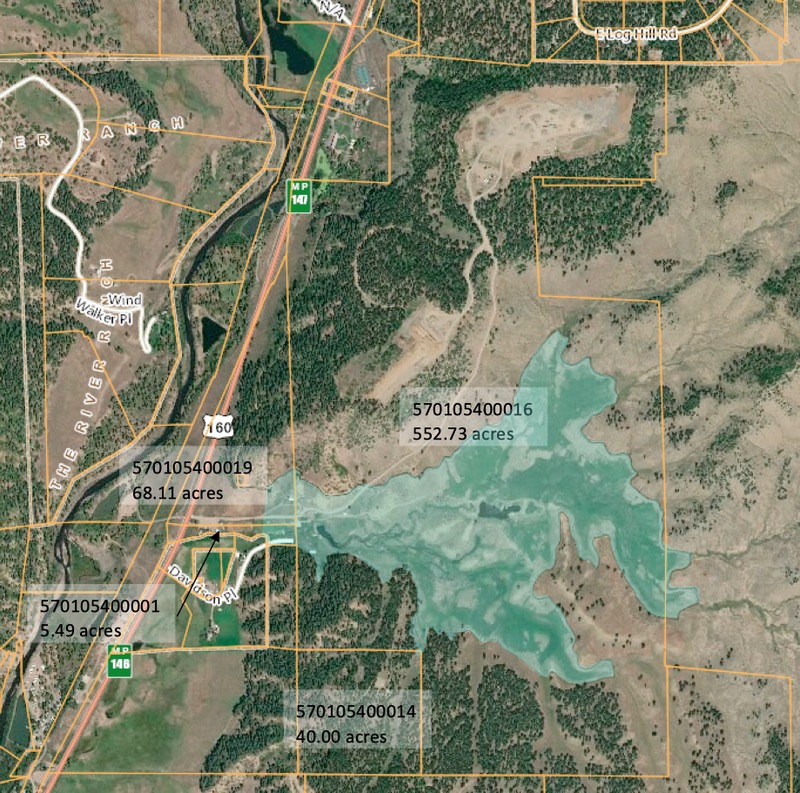“We’re the only agency trying to plan. And if you’re willing to go out there and be a leader, it’s frustrating to have it be so misinterpreted. All of the concern, uproar and outrage in the community could be tempered with perspective…”
— PAWSD assistant finance manager Shellie Tressler as quoted in the Pagosa Springs SUN in 2008, during the Dry Gulch fiscal crisis.
Our two local water district boards — Pagosa Area Water and Sanitation District (PAWSD) and San Juan Water Conservancy District (SJWCD) — gathered in the PAWSD meeting room on January 23 for a long-overdue discussion.
Back in 2008, when these two boards met regularly — in fact, back when they shared several of the same people on both boards, and shared the same staff, and the same attorneys, and the very same dream about a huge new reservoir in the Dry Gulch valley — you could hardly tell the two boards apart. Then came the ‘divorce’ in 2012, and the two boards had not sat down together for a healthy discussion ever since.
Until last Thursday.
Some divorces are ugly, and the divorce between PAWSD and SJWCD could have been viewed that way, except that the two boards jointly own 666± acres of gazing land (that is to say, they bought the land with taxpayer funds on behalf of the taxpayers) and two gravel pits and they needed to keep communication channels open. Barely open… to allow select members of each board to meet and discuss Dry Gulch financial problems.
Originally, the proposed Dry Gulch Reservoir was going to have water storage rights of up to 64,000 acre-feet. Then the number was dropped to 35,000 acre-feet. Then, following two Colorado Supreme Court rulings, a settlement was made with sportsman’s group Trout Unlimited to limit the reservoir to 11,000 acre-feet or less, and to additionally give up numerous other, older water rights.
Thursday’s meeting was, in my estimation, very informative and useful — considering that none of the people on either board had served during the time of the Dry Gulch purchase, and perhaps had limited background knowledge of the taxpayers’ real estate holdings. If the Dry Gulch Project is unhealthy, we cannot blame the people now serving on the PAWSD board or on the SJWCD board. (Which is a damn good thing, because I currently serve on the SJWCD board.)
Of course, not everyone would classify the Dry Gulch Project as ‘unhealthy’. The Colorado Water Conservation Board, for example, has seemed consistently eager — since at least 2008 — to see the reservoir constructed, and also to have its $9.2 million Dry Gulch loan, made to PAWSD in 2008, repaid at some point.
But more about that, as we go along.
Not too many members of the public were present that evening. In fact, Pagosa Springs SUN reporter Chris Mannara was, I believe, the only public audience member.

All seven SJWCD board members were in attendance, as were all five PAWSD board members. (PAWSD board member Glenn Walsh participated via telephone.) The meeting was chaired by PAWSD Manager Justin Ramsey, who had assembled an informative Power Point slide show with the help of SJWCD’s consultant Renee Lewis. Ms Lewis had herself once served as PAWSD Manager.
First, some historical perspective, per Mr. Ramsey’s slide show.

In 2008, PAWSD arranged a multi-million loan from CWCB… and SJWCD arranged a $1 million grant… to buy the Running Iron Ranch and some of the surrounding property. Presumably, PAWSD, SJWCD, and CWCB were all aware that the ranch had no water to speak of, and that the plan included an enormous pumping station to fill the proposed 35,000 acre-foot reservoir. That seemed like a lot of pumped water, but apparently water districts didn’t mind paying for electricity back in 2008… since the customers would be the ones paying the bill.
This $10.2 million real estate purchase from the Weber family seemed a bit overpriced to some members of the public in 2008, but the folks making the decisions — PAWSD, SJWCD and CWCB — apparently had no concerns about the price. The $9.2 million loan would be repaid by new PAWSD customers through their Capital Investment Fee and the newly-designed Water Resource Fee… whenever a new home or commercial building was built.
Unfortunately, in 2008 Archuleta County was spiraling down into a serious economic recession — right when PAWSD was taking out this multi-million-dollar loan — and the fees weren’t coming close to paying the interest, to say nothing of the principal on the loan. PAWSD had no choice but to raise water rates to pay for 666 acres of dry ranch land.
Here’s Mr. Ramsey’s slide, showing the various parcels owned by the taxpayers… (with the approximate reservoir location colored in turquoise by the Daily Post.)

By 2012, the PAWSD customers had voted out the board members who’d arranged this financial debacle, and SJWCD was also seeing board resignations. And we had the divorce underway.
Over the next four years, SJWCD’s volunteer President Rod Proffitt was paid by SJWCD, using taxpayer funds, to meet with PAWSD and CWCB and find a way to re-structure the $1 million grant and the $9.2 million loan, so that our two water districts didn’t risk going bankrupt. Volunteer PAWSD board members Mike Church and Glenn Walsh represented the PAWSD customers in the negotiations (without getting paid.)
During those re-structuring negotiations, it was determined that someone needed to do a professional appraisal of the 666 acre property.
Finally, the taxpayers had a chance to see how much 666 acres of dry ranch land had actually been worth.

About $4.56 million? In 2015, the real estate was worth less than half as much as the PAWSD and SJWCD boards had agreed to pay the Weber family in the midst of an economic recession.
But the deal gets even stranger than that.
As part of the 2008 real estate purchase, PAWSD and SJWCD agreed to a lease to allow the Weber family to continue ranching and extracting gravel on the ranch for the next 15 years. The price paid by the Webers for this lease?

$1.00 per year. To raise cattle and extract gravel on 666 acres of taxpayer-owned property…
